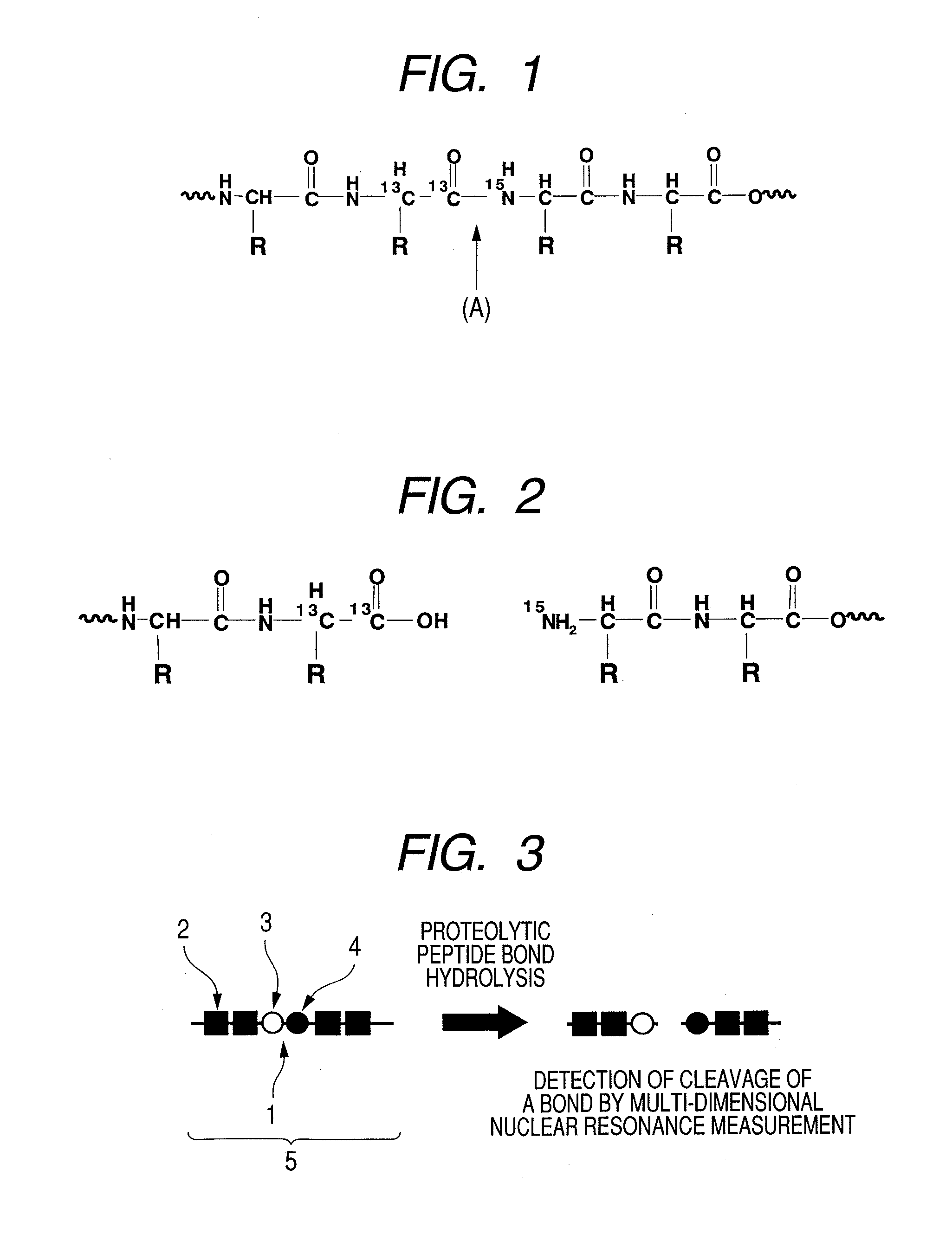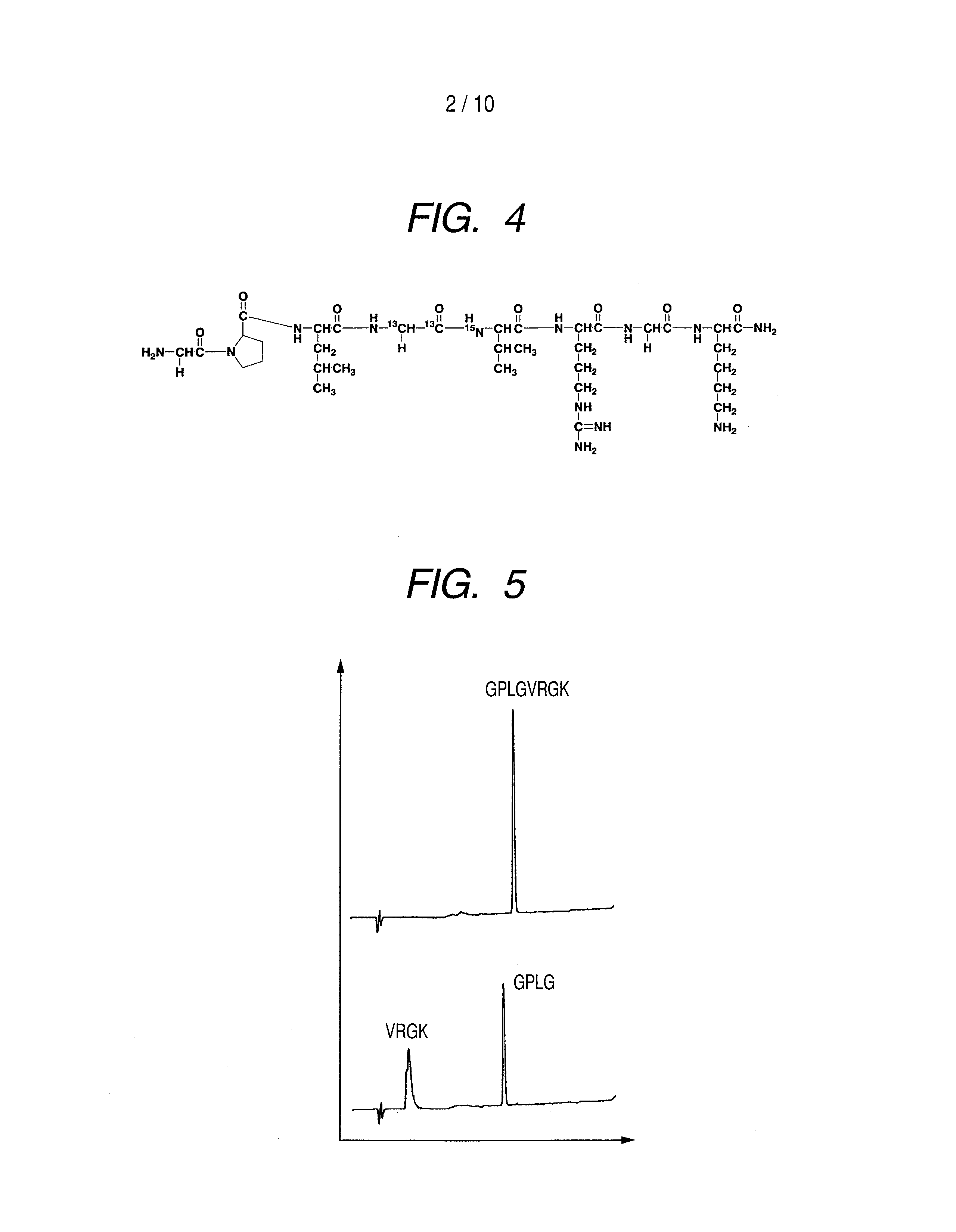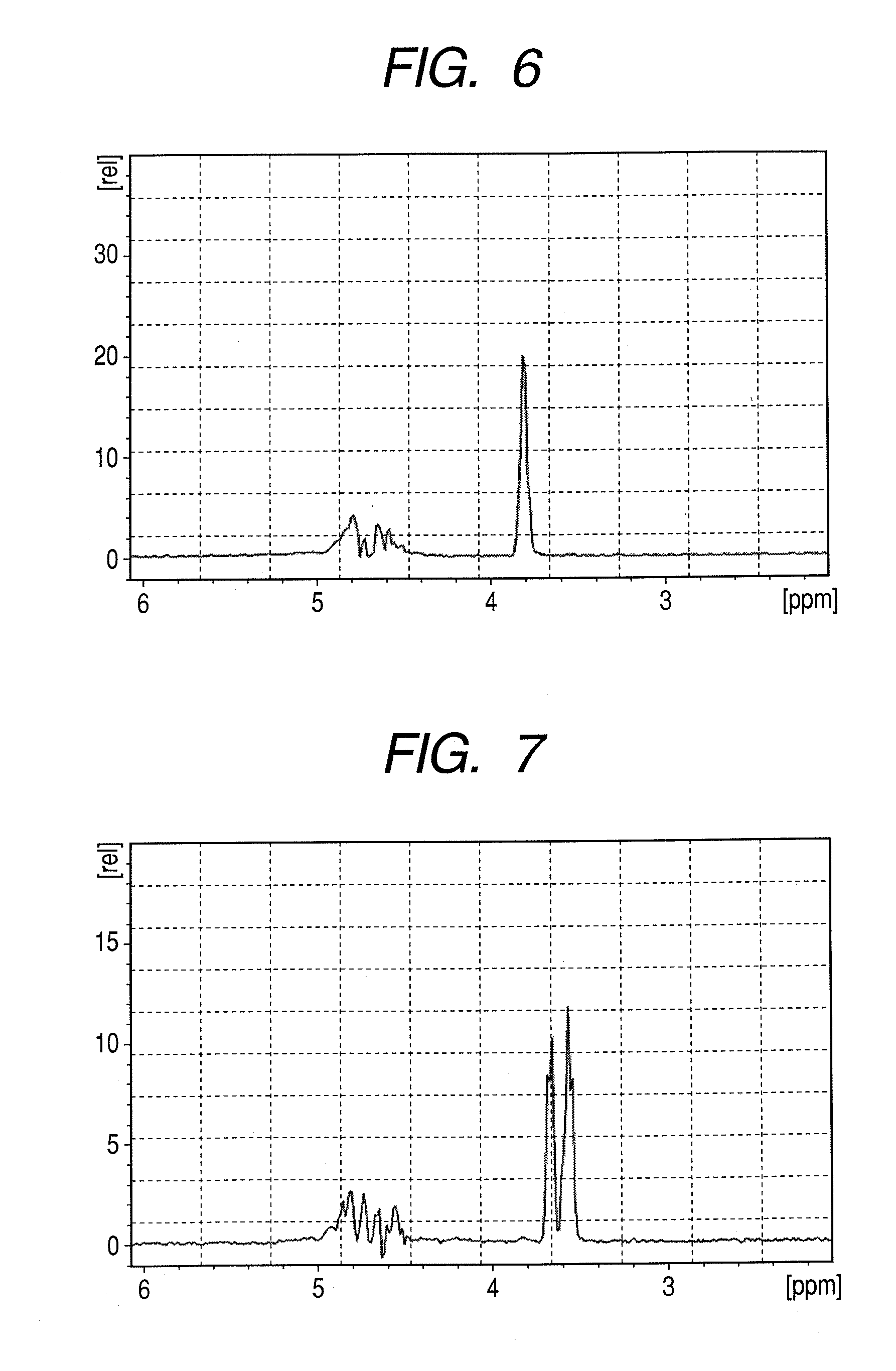Substrate probe, enzyme-activity detection method by a multi-dimensional nuclear magnetic resonance method and enzyme-activity imaging method
a multi-dimensional nuclear magnetic resonance and enzyme activity technology, applied in the field of substrate probes for measuring enzyme activity, can solve the problems of difficult to capture a signal sent from the deep part of a living body, abnormal increase or decrease of enzyme activity, etc., and achieve the effect of improving the reliability of enzyme detection
- Summary
- Abstract
- Description
- Claims
- Application Information
AI Technical Summary
Benefits of technology
Problems solved by technology
Method used
Image
Examples
example 1
(Detection of MMP2 Activity) (1-1:Synthesis of Isotope-Labeled Substrate Peptide-Probe to MMP2)
(1) Synthesis of peptide GPLGVRGK (H-Gly-Pro-Leu-Gly-Val-Arg-Gly-Lys-NH2)
[0090]Peptide GPLGVRGK (H-Gly-Pro-Leu-Gly-Val-Arg-Gly-Lys-NH2: Sequence No. 1) was synthesized by a general Fmoc method. To obtain a peptide having the 4th amino acid (Gly) from the N terminal, labeled with 13C at carbon atoms of the 1-position and the 2-position of the skeleton thereof and the 5th amino acid (Val) from the N terminal, labeled with 15N at nitrogen atom of the skeleton thereof, amino acids (Gly and Val) to be placed to these positions were previously labeled with isotopes and subjected to synthesis. Synthesis was performed by using Rink amide resin (manufactured by Novabiochem) in an amount of 0.2 mmol. The isotope-labeled amino acid reagents (L-Valine-15N, N-FMOC derivative, GLYCINE-13C2, F-MOC derivative) used in synthesis were purchased from ISOTEC. If not otherwise specified, non-isotope labeled am...
example 2
Multi-Dimensional Resonance NMR Analysis of Lactic Acid Production by Metabolic Reaction of Pyruvic Acid
example 2-1
Experiment of Culturing HeLa Cells in a Medium Containing 13C-labeled Pyruvic Acid
[0106]13C-labeled pyruvic acid was dissolved in a DMEM (+FBS) solution at 7 mM (30 ml) and the solution was sterilized by filtration. Three dishes were prepared in which a DMEM (+FBS) solution (9 ml) containing 13C-labeled pyruvic acid was poured. A DMEM (+FBS, +AB) solution (1 ml) containing Hela cells (700,000 cells / ml) was added to each of the dishes and cultured for 3 days under the conditions of 37° C., 5% CO2.
[0107]After the culture solution was collected, each dish was washed with a PBS solution (3 ml). The washing solution was also collected together with the culture solution. Thereafter, a trypsin-EDTA solution (1.5 ml) was added and cells were removed from the dishes by a cell scraper. After that, this solution was collected in another tube. Washing was performed again by the PBS solution (3 ml) and collected together with a cell solution. The culture solution and cell solution thus collected...
PUM
 Login to View More
Login to View More Abstract
Description
Claims
Application Information
 Login to View More
Login to View More - R&D
- Intellectual Property
- Life Sciences
- Materials
- Tech Scout
- Unparalleled Data Quality
- Higher Quality Content
- 60% Fewer Hallucinations
Browse by: Latest US Patents, China's latest patents, Technical Efficacy Thesaurus, Application Domain, Technology Topic, Popular Technical Reports.
© 2025 PatSnap. All rights reserved.Legal|Privacy policy|Modern Slavery Act Transparency Statement|Sitemap|About US| Contact US: help@patsnap.com



